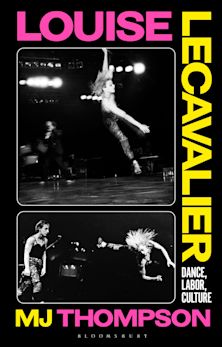Bloomsbury Home
- Home
- ACADEMIC
- Drama & Performance Studies
- Dance
- Dancing Freedom
Dancing Freedom
Modern Dance in Late Imperial Russia and the Early Soviet Union
Dancing Freedom
Modern Dance in Late Imperial Russia and the Early Soviet Union
Payment for this pre-order will be taken when the item becomes available
- Delivery and returns info
-
Free CA delivery on orders $40 or over
You must sign in to add this item to your wishlist. Please sign in or create an account
Description
For a long time, dance scholars and the public were hardly aware that modern dance existed in Russia. This book, however, delves into its presence, significance and survival in the late Tsarist and Soviet era, showing the large and significant positive contribution this made to the history of modern dance.
A creation of liberal body politics, 'free' or 'modern' dance flourished in late Imperial Russia and the early Soviet Union, before the hardening of communist regimes. An ideal embodiment of emancipation, free dance attracted dancers and audiences, including a significant number of modernist artists and intellectuals.
This book looks in particular at Isadora Duncan and her impact on Stanislavsky's methods, as well as on the ballet choreographer Michel Fokine. It throws light on Duncan's Moscow School, biomechanics and many modern dance studios of the time, their role in creating new systems of training – different from ballet – and their creation of a modern dance 'body'.
We come to see free dance into the years of Stalin's Cultural Revolution, where choreographers had to adapt to the new ideological environment – a far cry from the previous freedom of modern dance.
Table of Contents
Chapter 1. Techniques of freedom
Hypnotic dancer vs the dancing self
Liberated body, class body
New kinaesthetic regime
Chapter 2. Free dance travels east
Artful simplicity: Duncan and Stanislavsky
Impressionism in dance: Duncan and Fokine
On the way to a New Woman: The Moscow Duncan School
Chapter 3. The music issue
Eurhythmics
Musical Movement
A reflex to music
Chapter 4. Studios of free dance
Danse plastique
The art of movement
Dance theatre
The other ballet
The beginning of the end
Chapter 5. Rationalizing movement
Prof-Sid
Choreolab
Recording and displaying movement
Scientific organization of work and dance
Chapter 6. Ecstasy and the Machine
Dance to words
Machine dances
Biomechanics
The Soviet Girls
Chapter 7. Dance as physical culture
Dance gymnastics
Tefizkult
The Theatre of Physical Culture
Chapter 8. Taming dance
Partying to the Party instructions
Wolf, the Soviet entertainer
Conclusion: Re-performing freedom
Further reading
Index
Product details

| Published | Mar 19 2026 |
|---|---|
| Format | Hardback |
| Edition | 1st |
| Extent | 240 |
| ISBN | 9781350567191 |
| Imprint | Bloomsbury Academic |
| Illustrations | 19 bw illus |
| Dimensions | 234 x 156 mm |
| Publisher | Bloomsbury Publishing |


































